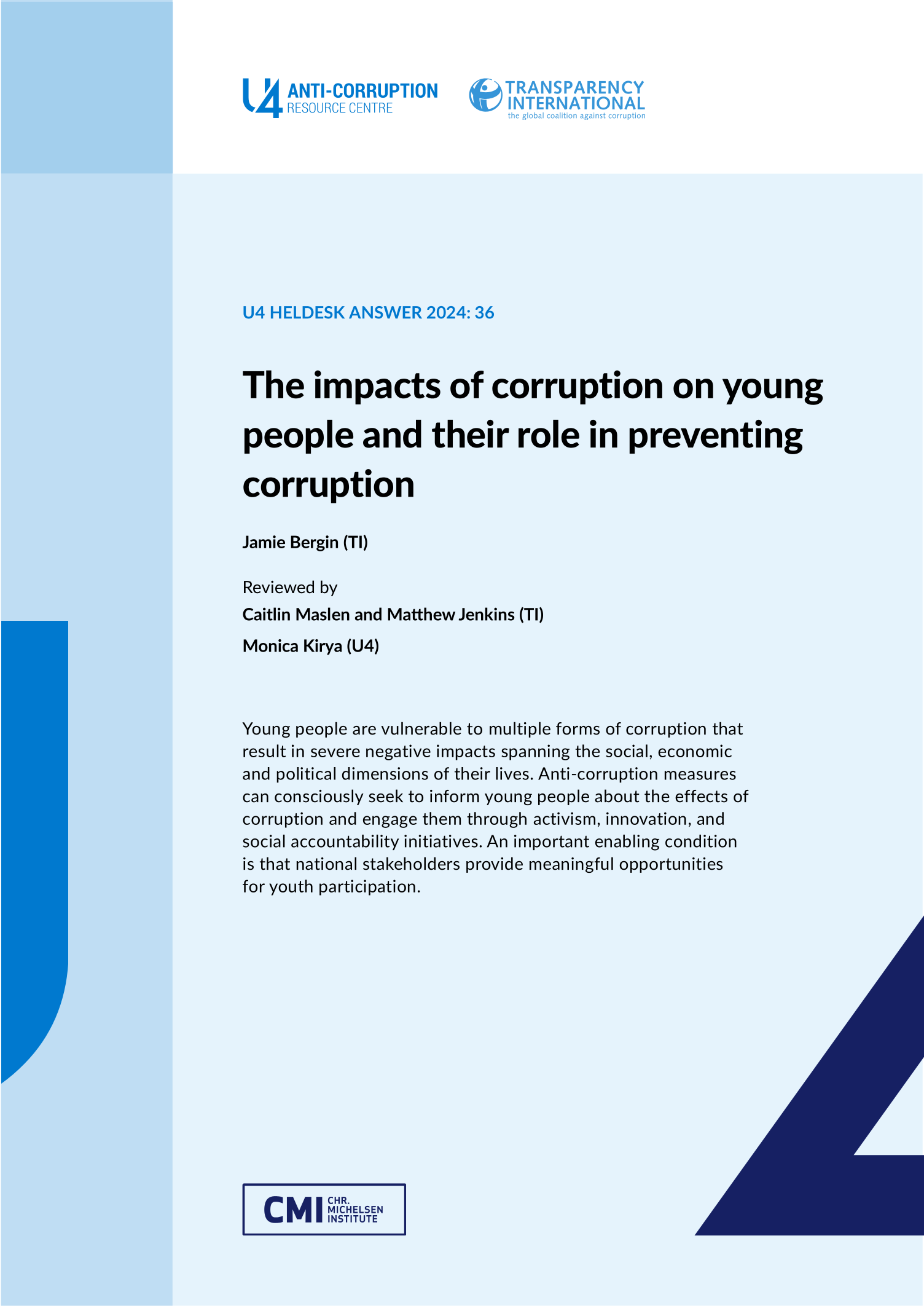Main points
- Available survey evidence suggests young people are often more exposed to corruption than the general population.
- Corruption is associated with a range of negative outcomes on issues that matter greatly to young people, especially in the realm of education. This can contribute to unemployment, emigration and political alienation.
- While primarily victims of corruption, some young people learn from an early age that corrupt practices are normal and view them as necessary to get ahead. Evidence increasingly shows that tailored education measures can help nurture young people’s intolerance for corrupt and unethical behaviour.
- Many positive examples have emerged in recent years showcasing the potential of engaging youth in anti-corruption, drawing on their ability to raise awareness, innovate and monitor and report corruption.
- Nevertheless, in many cases young people’s involvement may be underutilised or treated as tokenistic or cosmetic by national authorities. This has led many voices in the field to propose more meaningful forms of engagement for young people in anti-corruption efforts.



